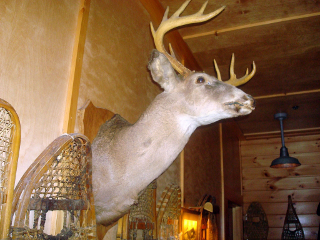 Taxidermy is synonymous with hunting but in my decades of being a taxidermist, I quit being surprised by how many capable hunters had almost no knowledge of how to be prepared for delivering quality specimens to their taxidermists. It seems logical that hunters would know basic hide handling and skinning techniques, but most don’t. Here are some tips to make any hunter a better taxidermy client.
Taxidermy is synonymous with hunting but in my decades of being a taxidermist, I quit being surprised by how many capable hunters had almost no knowledge of how to be prepared for delivering quality specimens to their taxidermists. It seems logical that hunters would know basic hide handling and skinning techniques, but most don’t. Here are some tips to make any hunter a better taxidermy client.
Get engaged with the process
If you hunt and anticipate killing an animal that you might want mounted, then do your homework and find a reputable taxidermist. Don’t just ask your buddy for their recommendation. One person’s opinion is never valid when it comes to taxidermy, so be diligent. The internet is full of info, so use it.
Does your potential taxidermist have a turn-around time of less than a year? They should. Does your potential taxidermist do their own tanning or do they send it out? Only a rare few taxidermist produces quality tans, so the ones that send out skins to be tanned by professional tanneries usually have better quality control. Ask several people who they recommend and build a list to go off of. Narrow it down and take the next step.
Visit your taxidermist
Most taxidermists don’t like to be bothered during a work day, but you can change that by asking them for their preference on how they would like to receive a specimen from you. Being thorough and sincere will go far when it comes to making sure you get the best service possible when it is mounting time, and taxidermist appreciate clients who care.
Start researching
After you have visited your taxidermist and let them know that you are serious about making their job easier, the next step is to start learning how to handle your animals properly. Youtube offers free educations on just about everything so there is really no excuse for being ignorant when it comes to knowing how to skin properly, turn lips and eyes, and effectively flesh and salt your skins or capes. Go to www.taxidermy.net and ask someone for a damaged cape that you can buy so that you can use it to practice on.
Learn from others mistakes
Without fail, every year some unlucky hunter would keep his trophy deer in the back of his truck for too long while showing it off, only to later have the deer’s hair to slip during the tanning process. Once an animal dies, bacteria begins to break down cells which start the rotting process. This is why hair falls out and clueless hunters often think their taxidermist ruined their cape. Little details like this are easy to find out about but are seldom learned.
Finding the right taxidermist and doing your part in the process, not only helps you, but it strengthens the hunting industry and helps ensure that there will be a future for hunters and taxidermists alike.








